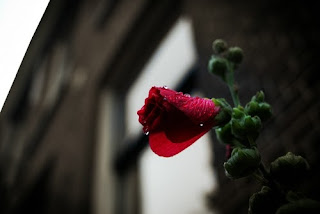To be honest I don’t know. I have been thinking about this because of a discussion I had recently about photography with another photographer. He insisted that I studied the work of some older photographers (I am familiar with the work of the well known photographers but not with every single on of them.)
His approach to photography is completely different then mine, he tries to be influenced by photographers and I just try to take the best photo I am capable of. (I am probably influenced by other photographer but I don’t try to be influenced by them)
And I think there is a difference in how we think about photography. He considers it art, while I consider it photography. I truly don’t think that photography is a pure form of art. It is artistic, but it is just too real. Everyone can take a perfectly good photograph his compact camera and get a great result. Especially if you know just a little about photography. I also think that photography mainly is about how you use your equipment and your equipment. I can not place something extra in the photo, I can’t influence how a deer behaves or how a landscape looks like. How can I make it mine, my scene. Of course I can use filters, different perspectives etc. but the credits for creating the scene, the surrounding, the inhabitants of this world go to mother nature. You can’t wave with your lens over a scene and create something which only you could see, only in your imagination.
I also couldn’t help noticing that all the images he showed me he considered art were taken on film a long time ago. Most of them showing light leaks, unsharpness, and with a lot of blacks and whites. We both agreed that they are nice photos, and I think that these images come very close to art. And this is where this article really is about.
Digital (and late film) photography has become too good, too sharp, too true. There is no more room for errors. Everyone is buying expensive lenses with ED elements, for optimum sharpness and minimum flares, ghosts etc. I think modern technology has perfected photography to such an extend that it is nowhere near art anymore.
What I also noticed was that since I noticed this, I have been using one of my lenses which is more prone to flare and ghosts and is not sharp at all wide open. I always took this lens for granted, there’s oil on the aperture blades and it hasn’t a good IQ. But now I have been looking for less quality it hasn’t left my camera. Unfortunately the sun hasn’t shown it’s face yet, so I can get some low-contrast-flared-low-quality-images, but if I get some I will post them in this article.
But I also do think that there is a place for the modern photography. I do want to have sharp photographs from my friends etc. or when there is a beautiful sunset. But I think that there is a place for low quality lenses in photography and that that place is forgotten. Not only by me but by almost every photographer.
This was my rant for today :P please take a look at my review of the metz






















